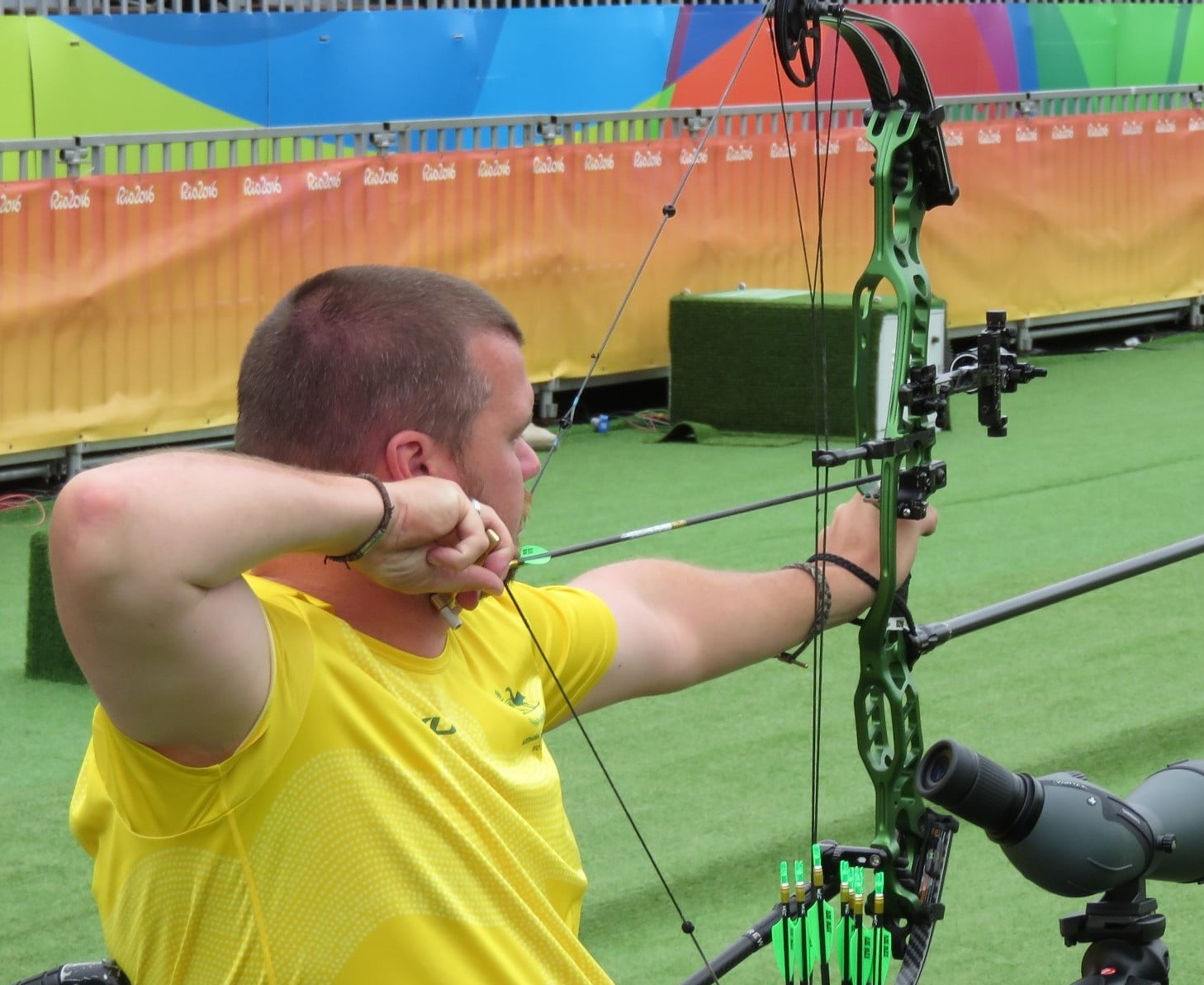Jonathon Milne is feeling under no particular stress that he’s the first Australian to qualify in archery at a Paralympic Games since Athens 12 years ago.
He is also not feeling all that lonely considering he’s a one-man band in Rio – the only archer on the 177-strong Australian Paralympic team, which is a far cry from the heady days of the 1972 Games when a team of nine competed.
“I don’t place any expectations on myself. I try and do my best and that formula means I normally do well,” said the 30-year-old Milne from western Sydney.
Cases in point would be last year’s Australian nationals where Milne finished 8th and 10th against able-bodied archers.
He then went to the IPC (International Paralympic Committee) 2015 world titles in Germany and only needed to finish in the top-20 to qualify for Rio de Janiero. He finished fourth, losing the bronze medal to Great Britain’s John Stubbs, who just happens to be staying in the adjacent apartment block to Milne in the Athletes’ Village.
So from his first world championships to his first Paralympics all in the space of 12 months. It could be too much of a whirlwind for some to maintain consistency – but not Milne.
“I don’t know how everyone else deals with it but I go into every competition with the view it’s the same distance, same targets, same equipment,” he said.
“I don’t go out there working myself up to try to do anything but shoot strongly.”
Paralympic archery has the same format as the Olympics: shoot arrows onto a 10-circle target from a distance of 70m using a recurve bow, or from 50m using a compound bow. The competition area is identical and the equipment similar.
Milne uses a compound bow and shoots from his wheelchair.
Four years ago he was having a dip in the ocean at Avoca Beach on the NSW central coast.
“I was at the beach with my wife and I was just diving through a wave about three metres from shore and just clipped a sand bank on my forehead.”
The impact broke the C7 vertebrae in his neck making him a paraplegic. He had tinkered with archery when he was teenager.
“I did it for a short time when I was about 13. The fact I was doing it all by myself meant I gave it up after a short time,” he said. “But coming back to it I knew I could do it from my chair. I didn’t need anyone to hit a ball back to me or anything.
“It was more to do with starting up again a few months after my accident. It got me out of the house; something to do while I was still rehabbing my injury.”
And now he finds himself amongst one of the most competitive of Paralympic sports at Rio.
“There’s been competitions out here at the Paralympic venue for the last 10 days in a row and 10 different guys have won,” he said.
“So on any day, any one has a chance. There’s plenty who can do it – it will come down to the best on the day.
“It can get a bit windy but I’m comfortable with that, as there’s often wind at my home range (Sydney Olympic Park).”


 Join AUS Squad
Join AUS Squad

